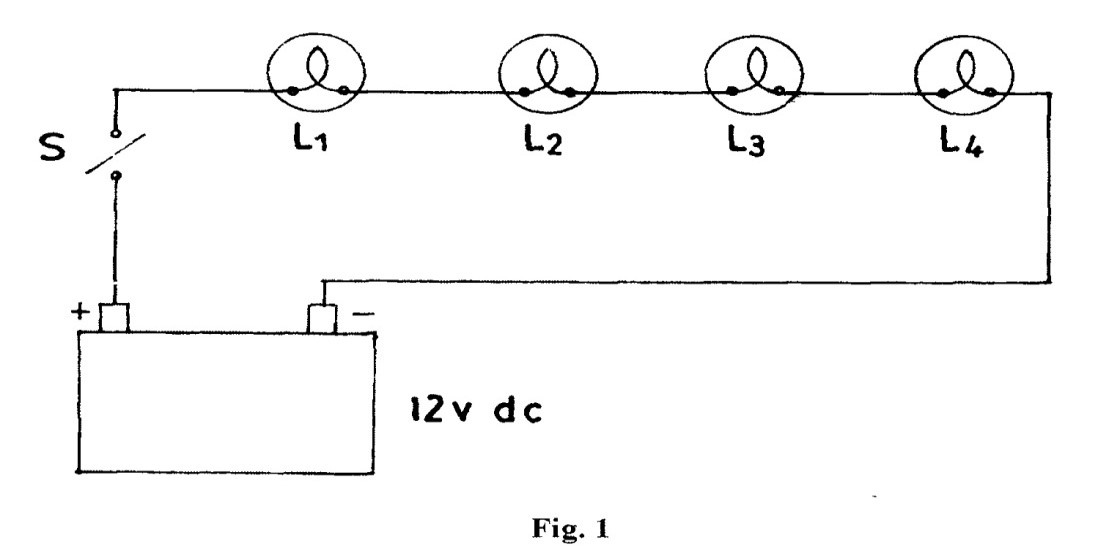Question 1

Reading |
Voltage (V) |
Battery terminal voltage on no load |
|
Lamp 1 |
|
Lamp 2 |
|
Lamp 3 |
|
Lamp 4 |
|
(a) Connect the circuit as shown in Fig. 1.
(b)Ask the supervisor to check the circuit connection.
(c)Copy Table 1 into your answer booklet.
(d)Measure and record in Table 1 the battery terminal voltage on no load.
(e)Insert lamps L1, L2, L3 and L4.
(f)Close switch S and record the state of the lamps in your answer booklet.
(g)Remove lamps L1, L4 and record your observation of the other lamps in your answer booklet.
(h)Replace lamps L1 and L4.
(i)Use the voltmeter to measure the voltage across L1, L2, L3 and L4. Record the readings in Table 1.
(j)Comment on the result in step i.
(k)State two applications of a series circuit in a motor vehicle.
Observation
The expected answers were;
(c) Correct copying of Table 1 into the answer booklet.
Reading |
Voltage (V) |
Battery terminal voltage on no load |
|
Lamp 1 |
|
Lamp 2 |
|
Lamp 3 |
|
Lamp 4 |
|
(d) Battery terminal voltage: 10 – 12V.
(f) All lamps are on.
(g) Other lamps L2 and L3 went off.
(i) Table 1
Reading |
Voltage (V) |
Battery terminal voltage on no load |
|
Lamp 1 |
|
Lamp 2 |
|
Lamp 3 |
|
Lamp 4 |
|
(j) Comment of the result in step i
The voltage drops across the lamps were low compared to the battery terminal voltage on no load. The sum of voltage drop across the lamps is equivalent to the terminal voltage produced by the battery.
(k) Applications of a series circuit in a motor vehicle.
- Air conditioner
- Fuel tank sender (fuel gauge)
- Ignition circuit.
The voltage readings given by many candidates were out of range. And only a few were able to give the applications of series circuit in a motor vehicle.
